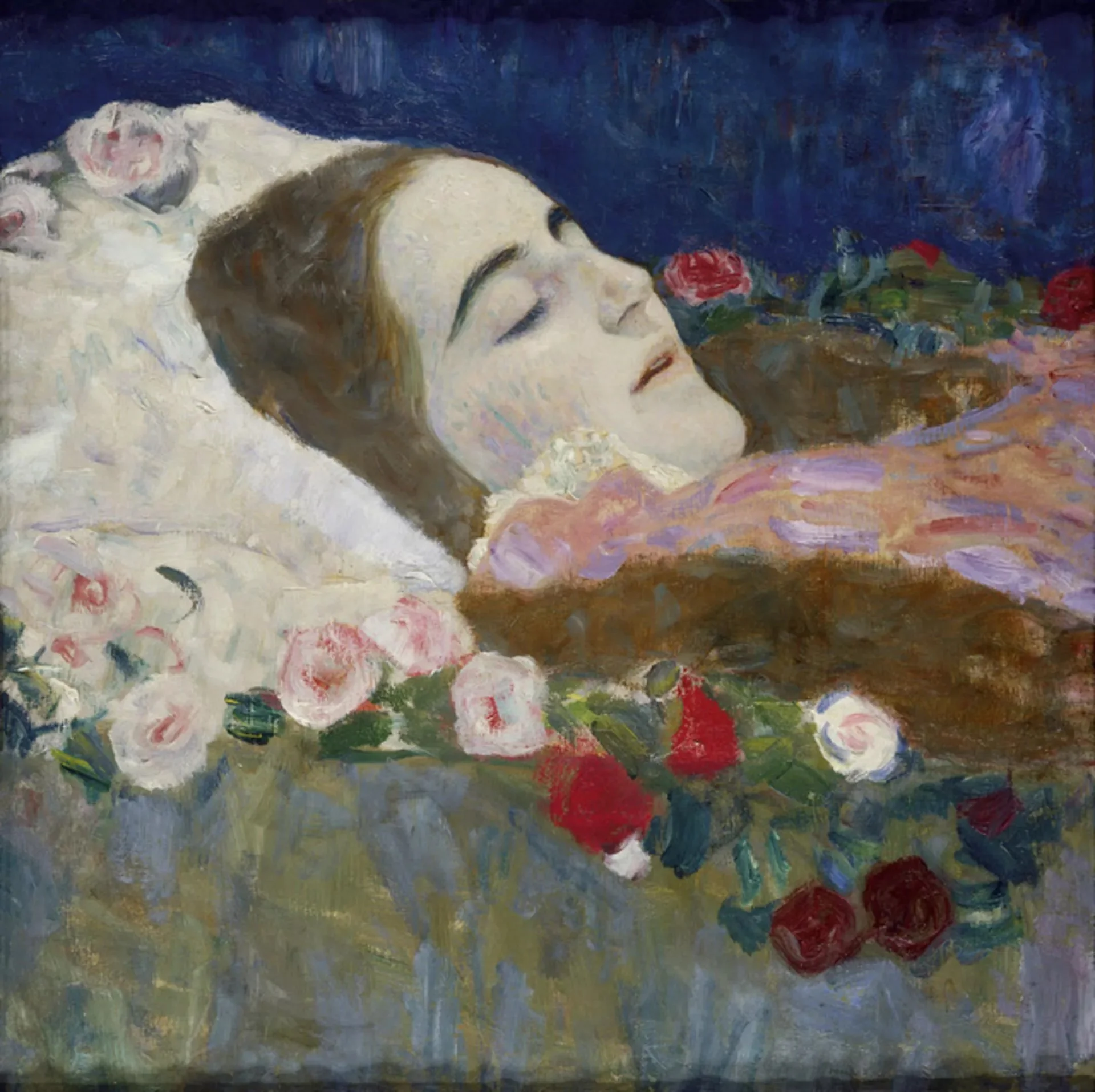Miss Ria Munk on her Deathbed, Gustav Klimt, 1912
In the year 2000, my mother passed away from metastatic breast cancer in the bone. It was a grueling journey that lasted more than 12 years. I was 17 when it began and 30 when she departed. During that period, I became involved with a meditation teacher who had written a book called Easy Death. In the final year of my mother’s life, I was guided by the author’s insights and was blessed to participate in her passing through the lens of loving service. My meditation teacher’s awareness of this profound process enabled me—and my family—to participate in a knowing and loving way that opened my eyes to the dying process as one final experience the body has. I came to understand how we can serve the dying with dignity and acceptance—not denial or fear, but with loving compassion.
Our culture denies death, and yet there is nothing to fear about dying. Often, our fear stems from the anticipation of extreme pain (which is now better managed with medicine), fear of the unknown, and the fear of losing everything we love. Rationally, this makes sense; however, death transcends the rational.
In Eastern mystical traditions, suffering is rooted in identifying with a world that is inherently impermanent. The fear of loss arises from our attachment to the world we inhabit. This is a choice made by the living, one that simply does not serve those who are dying.
Elizabeth Kubler-Ross taught that attachment to unfinished business can hold a dying person back from letting go. In the 60+ years since her teachings, we’ve come to understand that it’s not only unfinished business but also regret, guilt, and shame that can prevent an easy transition. When I learned this, I realized that in my meditation practice—watching the mind—these same attachments (regret, unfinished business, guilt, shame) are patterns we all carry, whether living or dying. They stem from various traumas humans experience, burdens we often push away because they are too heavy to bear. While living, these patterns stay mostly unconscious, but for the dying, they resurface and become profoundly real. One role a doula plays is to assist the dying individual in recognizing and releasing these patterns, as they do not serve the dying process. Letting go of these burdens allows the person to relax and healthily engage with their dying, no longer denying but embracing the final letting go.
Meditation has taught me that we are composed of two major aspects: consciousness and awareness. When we are in our body, we identify with it; our consciousness experiences life through the body. There is the body and then there is consciousness. This is a binary, or duality, in which we live. However, the second aspect—awareness—is less understood in the Western world. Awareness surrounds both the body and consciousness. It is not part of duality; it is neither body nor consciousness but something prior to both. Eastern traditions teach that we come from awareness and, in death, we return to it. What follows is a great and wonderful mystery—how you choose to believe in it is up to you, the living.
As a doula, my role is to hold space—awareness—so the person transitioning has the support of compassion, love, and presence. In death, healing occurs for all involved. For the dying, healing is the process of releasing and letting go. For those left behind, healing can come as a gift from the death itself: the living get to witness and participate in the dying person’s transition into awareness. This can be a profound and life-affirming gift.
I welcome inquiries from individuals and families seeking compassionate end-of-life support.
